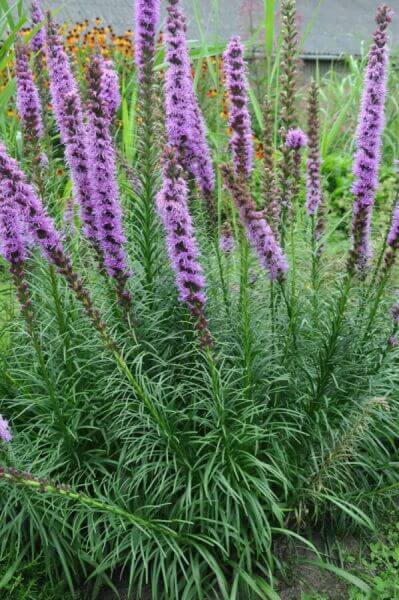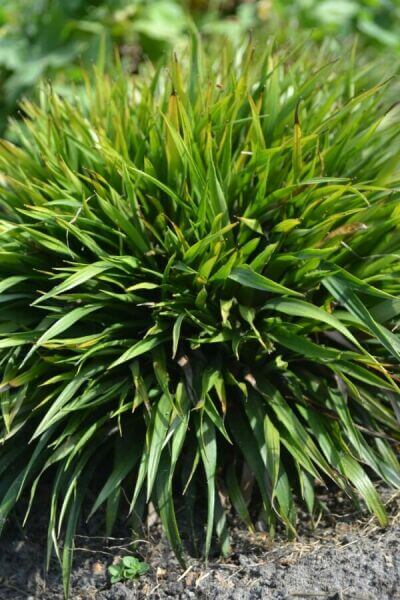Hedge Plants For Commercial Properties
Hedge Plants For Commercial Properties
Blog Article
Best Hedging Plants For Frosty Areas
Enhance your garden's appeal with lavish hedge varieties such as Yew (Taxus), Thuja, Laurel, Photinia, and Bamboo, celebrated for their structural stability and environmental advantages.
Yew and Thuja supply evergreen protection and winter strength, while Laurel offers fast development and broad, fragrant leaves.
Photinia includes seasonal charm with its dynamic red foliage, and Bamboo provides a low-maintenance, serene ambiance.
These hedges enhance air quality, reduce noise, and produce tranquil, personal spaces.
Appropriate planting, spacing, and upkeep ensure energetic growth and environmental consistency.
Check out how these lush varieties can raise your garden's beauty and well-being.
Secret Takeaways
Transform Your Garden With Lush Hedge Varieties
- Select Yew for its thick, evergreen development and unequaled longevity.
- Choose Laurel for its quick growth and broad leaves, making sure quick privacy.
- Choose Photinia for its vibrant seasonal foliage, which turns a striking dark red.
- Use Bamboo for a low-maintenance, winter-hardy hedge with aesthetic appeal.
- Space plants 2-3 per meter and prune routinely for ideal development and health.
Popular Hedge Plants
When changing a garden with lush hedge varieties, it's important to think about popular hedge plants such as Yew, Thuja, Laurel, and Photinia due to their distinct qualities and advantages.
Yew (Taxus) is extremely respected for its longevity and dense, green development, making it a prime option for sustaining landscapes.
Thuja is noted for its evergreen foliage and robust winter season resilience.
Photinia includes seasonal vibrancy with red leaves that darken with time, developing dynamic visual appeal.
Laurel provides fast growth and fragrant, broad leaves, ideal for quick privacy.
In Addition, Bamboo is an exceptional option for ambiance, offering a low-maintenance, winter-hardy alternative that enhances the garden's visual with its classy, swaying walking canes.
These choices accommodate a variety of horticultural needs and preferences.
Benefits of Garden Hedges
Garden hedges offer a multitude of advantages, making them a valuable addition to any landscape. These natural barriers are affordable to carry out and supply considerable wind protection, enhancing air blood circulation and contributing to sound decrease. The dense foliage of hedges like Thuja and Beech makes sure personal privacy by obstructing presence, producing a peaceful and remote environment.
Hedges also play a crucial function in microclimate regulation, supplying a steady environment that fosters plant development and reduces temperature level variations. Their complex leaf structures filter toxins, enhancing air quality and contributing to a much healthier garden ecosystem.
Moreover, hedges master sound reduction, taking in and deflecting acoustic waves to lower ambient sound levels. This dual performance of providing both acoustic and visual privacy boosts the total serenity and visual appeal of any garden.
Planting and Maintenance Tips
For a successful hedge, meticulous preparation of the planting location is crucial. Ensure the soil has correct pH and drainage to support strong root development.
Space the plants properly for the chosen species. Water the hedge often throughout its initial growth stage, changing as needed with seasonal changes.
Execute a organized bug control and disease prevention technique, utilizing chemical or organic treatments when necessary. Routinely check for aphids, mites, and fungal infections.
Apply mulch to keep wetness and suppress weeds. Seasonal pruning promotes dense development and air circulation, important for plant health.
Following these guidelines will assist you cultivate a dynamic, well-maintained hedge that enhances the charm of your garden.
Spacing and Cutting Standards
Spacing and Cutting Standards
Appropriate spacing and cutting are important for cultivating healthy, visually appealing hedges. Sufficient spacing makes sure each plant gets enough nutrients, light, and air flow.
Follow these standards for optimum hedge upkeep:
- Spacing: Position hedge plants 2-3 plants per meter to motivate robust growth.
- Pruning Methods: Regular pruning is important for preserving preferred hedge height and shape. Cut brand-new growth in summer season and cut back older wood throughout winter season.
- Seasonal Care: Change cutting schedules and techniques according to seasonal requirements to ensure plant health.
- Hedge Height: Regularly monitor and trim to maintain the desired hedge height and accomplish uniform visual appeals.
Abiding by these steps will ensure your hedge grows, boosting both the appeal and functionality of your garden.
Choosing the Right Hedge
Picking the Right Hedge
Choosing the appropriate hedge involves evaluating aspects such as mature height, foliage density, and ecological durability. Successful hedge plant choice requires understanding each types' development characteristics and site-specific flexibility.
For instance, Yew (Taxus) provides excellent durability and dense development, while Thuja is notable for its winter season durability. Additionally, considering upkeep requirements is vital; fast-growing types like Laurel or Privet need regular cutting, whereas low-maintenance options like Bamboo or Ivy may be more suitable for those looking for minimal maintenance.
Environmental aspects such as soil type, light accessibility, and wetness conditions should likewise assist the selection procedure. This careful technique makes sure the picked hedges will thrive, providing both aesthetic and practical benefits to the garden landscape.
Shipment and Planting Advice
To ensure your hedge plants prosper, they need to be delivered by specialized couriers and planted immediately upon arrival.
Follow these vital steps for effective planting:
- Soil Preparation: Improve the soil with raw material to enhance drain and nutrient material.
- Planting Depth: Produce a trench twice the width and equal to the depth of the root ball.
- Watering Strategies: Water completely after planting, keeping the soil regularly moist but not saturated.
- Mulching: Use a layer of mulch to maintain wetness and suppress weeds.
Customer Support and Service
Offered the crucial function of prompt help in horticultural pursuits, our consumer assistance team is offered 6 days a week through telephone, e-mail, and social media to offer professional suggestions and swiftly address any issues. Their devotion to fast response times ensures customer satisfaction by dealing with queries associated with plant health, ideal planting techniques, and upkeep schedules.

Schedule
Within 24 hours
This thorough support system, strengthened by an excellent 9.3/ 10 consumer rating, highlights our commitment to improving the gardening experience for every client.
Often Asked Concerns
The Length Of Time Does It Consider Hedge Plants to Develop?
Hedge plants generally require one to three years to end up being fully developed, with the exact duration varying by species and growing conditions.
Effective care during this critical period is essential for robust development. Constant watering, alert weed control, and proper fertilizer application are essential in promoting strong root advancement.
For example, fast-growing types like Laurel might develop faster, while slower-growing varieties such as Yew might take longer. Diligent maintenance speeds up the facility procedure, leading to thick and healthy hedges.
What Are the Best Hedge Plants for Privacy?
The concern of the very best hedge plants for privacy involves examining evergreen and deciduous alternatives.
Evergreen hedges like Thuja, Laurel, and Cypress offer year-round coverage, guaranteeing continuous personal privacy.
On the other hand, deciduous hedges such as Beech provide seasonal personal privacy, shedding leaves in cooler months.
Secret maintenance tips for personal privacy hedges include routine cutting, fertilizing in spring, and appropriate spacing-- typically 2 to 3 plants per meter.
In addition, consistent watering and diligent weed elimination are essential for promoting healthy, thick development.
Can Hedge Plants Draw In Wildlife to My Garden?
Yes, hedge plants can bring in wildlife to your garden by offering essential advantages like shelter, food, and nesting sites, therefore improving regional biodiversity. For example, yew, holly, and laurel are excellent for bring in birds, while ivy supports a variety of pests.
Nevertheless, it is very important to keep in mind that there are some disadvantages, such as increased maintenance to manage insects and regular maintenance. Carefully choosing and keeping hedge varieties can assist balance these drawbacks and benefits, eventually fostering a dynamic and sustainable ecosystem in your garden.
Are There Any Blooming Hedge Plants Available?
Yes, there are flowering hedge plants readily available that can boost the beauty of your garden.
For example, Elaeagnus, likewise called Olive Willow, produces fragrant white flowers in the fall, adding a touch of sophistication.
Photinia, another popular option, showcases vibrant red leaves that develop into an abundant green, developing a vibrant visual effect throughout the seasons.
To Article source guarantee these plants prosper, it's important to practice proper pruning techniques and seasonal maintenance, such as cutting brand-new development in the summer season and cutting down in the winter.
These procedures will help keep the health and aesthetic appeal of your flowering hedges.
How Do I Prevent Pests in My Hedge Plants?
To prevent pests in hedge plants, employ natural insect control techniques and keep appropriate hedge care. Present helpful pests like ladybugs, which prey on hazardous insects, to create a balanced community.
Routinely examine your hedges for signs of invasion and without delay eliminate any affected parts to prevent the spread. Ensure the health of your hedges by applying well balanced fertilizers and supplying appropriate water.
Use mulching to keep soil wetness and proper spacing to minimize plant tension and promote robust growth. These practices collectively help in minimizing bug concerns and keeping a healthy hedge.
Conclusion
In essence, picking the best hedge varieties such as Yew, Thuja, and Laurel can change any garden into a serene sanctuary. These plants offer year-round greenery, enhance visual appeal, and deal practical benefits like sound reduction and wind protection.
Proper planting strategies, precise spacing, consistent watering, and seasonal trimming are vital for optimum development.
Reputable delivery services and skilled consumer assistance guarantee a seamless experience from purchase to planting, making it easier than ever to raise your outdoor area.
Garden hedges provide a wide range of advantages, making them a valuable addition to any landscape. These natural barriers are cost-efficient to execute and offer significant wind defense, enhancing air blood circulation and contributing to noise reduction. The thick foliage of hedges like Thuja and Beech ensures personal privacy by obstructing exposure, creating a secluded and peaceful environment.

Pruning Methods: Regular pruning is important for maintaining wanted hedge height and shape. Cut new development in summer season and cut back older wood during winter.
Report this page